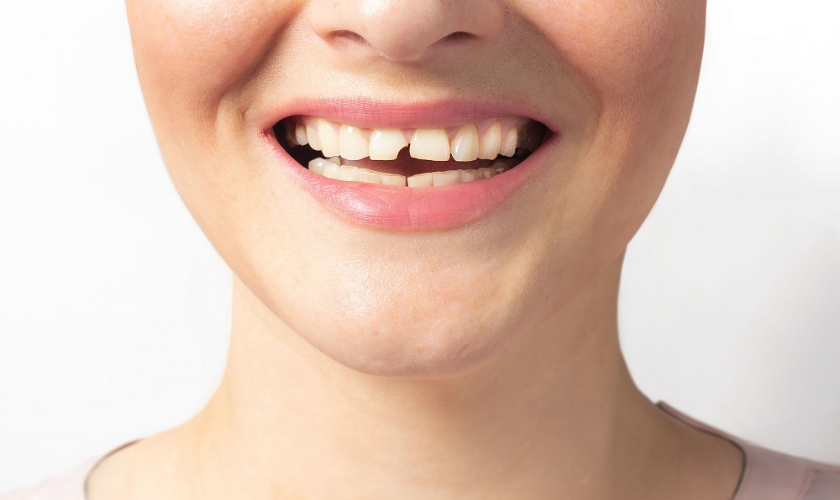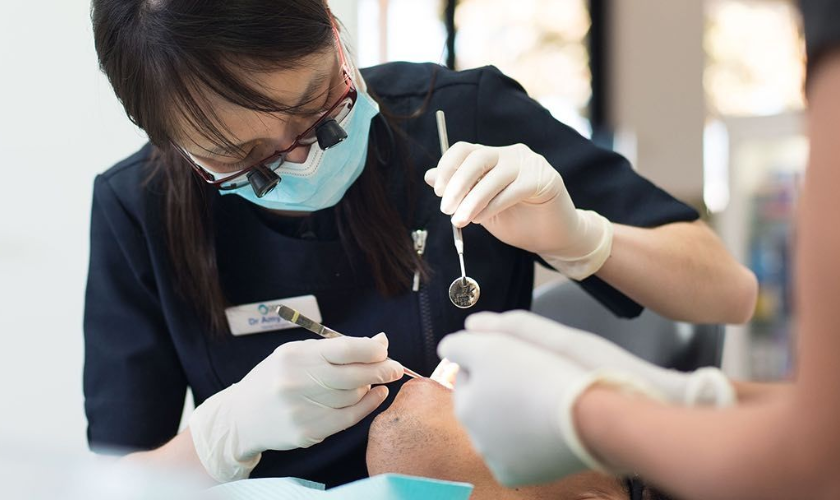A broken tooth can be a scary and stressful experience. Whether it’s a minor chip or a large chunk missing, a broken tooth can cause pain, and discomfort, and affect your confidence. But don’t panic! Here’s a comprehensive guide to what to do if you find yourself with a chipped tooth, including steps to take at home, potential treatment options, and how to prevent future breakage.
Understanding Broken Teeth
A broken tooth can manifest in several ways:
Chipped Tooth:
This is a small piece of enamel that breaks off, usually painless but may cause slight sensitivity.
Cracked Tooth:
A crack that extends through the enamel and may reach the dentin (inner layer) of the tooth. This can cause sharp pain, especially when biting down.
Split Tooth:
A severe crack that vertically divides the tooth, often requiring extraction.
Fractured Cusp:
A broken cusp (pointed chewing surface) of the tooth.
The severity of the break and the symptoms you experience will determine the course of action.
Immediate Steps After Breaking a Tooth
1. Stay Calm & Assess the Damage:
Take a deep breath and assess the situation. If there’s bleeding, gently apply pressure with a clean gauze pad to stop it. If at all feasible, find the tooth’s fractured fragment.
2. Relieve Pain (if any):
If you’re experiencing pain, rinse your mouth with warm salt water to cleanse it. To lessen swelling, place a cool compress on the outer part of your cheek. Acetaminophen or ibuprofen, two over-the-counter pain medications, can also be helpful.
3. Save the Broken Piece (if applicable):
If you have a broken piece of tooth, try to gently rinse it with milk or saline solution. Do not scrub it.
4. See a Dentist Immediately:
Regardless of the severity of the break, seeing a dentist as soon as possible is crucial. They can assess the damage, diagnose the underlying cause, and determine the best course of treatment to save your tooth and restore your smile.
Treatment Options for Broken Teeth
The treatment for a broken tooth depends on the extent of the damage and the location of the break. Here are some potential options:
Bonding:
For minor chips or cracks, a dentist can use a tooth-colored resin to bond the broken piece back onto the tooth. This is a quick process that costs not too much money.
Dental Filling:
If the break extends to the dentin layer, a filling material will be used to restore the tooth structure and prevent further damage.
Dental Crown (Cap):
For more severe breaks or cracked teeth, a crown (cap) may be necessary. This is a custom-made restoration that covers the entire tooth, providing strength and protection.
Root Canal Therapy:
If the pulp (inner nerve) of the tooth becomes infected due to the break, a root canal may be required to remove the infected tissue and save the tooth.
Tooth Extraction:
In cases of severely broken teeth or extensive damage, extraction may be the only option.
What to Expect During Your Dental Visit
During your visit to the dentist, they will:
- Conduct a thorough examination of your teeth and mouth, including X-rays to assess the extent of the break and any underlying problems.
- Discuss the treatment options available and recommend the best course of action based on your specific situation.
- In addition to answering your questions, describe the process.
Living With a Repaired Broken Tooth
Once your chipped teeth are treated, proper dental hygiene is essential to prevent further damage and maintain oral health. This includes:
- using fluoride toothpaste and a soft-bristled toothbrush to clean your teeth twice a day.
- going to the dentist for routine cleanings and examinations.
- getting regular cleanings and examinations at the dentist.
Preventing Broken Teeth
While a broken tooth can happen accidentally, there are ways to minimize the risk:
- Avoid using your teeth as tools: Don’t use your teeth to break open nuts, bottles, or other hard objects.
- Wear a mouthguard: If you participate in contact sports, wear a mouthguard to protect your teeth from impact.
- Don’t chew on hard candy or ice: These can put a strain on your teeth and lead to breakage.
- Maintain good dental hygiene: Strong, healthy teeth are less likely to break.
- Manage teeth grinding: If you grind your teeth at night, talk to your dentist about a nightguard.
Additional Considerations and Frequently Asked Questions (FAQs) About Broken Teeth
Cost of Treatment
The cost of treating a broken tooth can vary depending on the severity of the break, the chosen treatment option, and your dentist’s fees.
Minor chips or cracks:
Bonding procedures are typically the most affordable option.
Fillings and crowns:
These procedures can cost more than bonding but are less expensive than root canals or extractions.
Root canals:
These can be more expensive due to the additional steps involved.
Extractions:
Extractions themselves may be less expensive, but considering potential replacements like implants, the overall cost can be significant.
Dental insurance can help offset some of the costs associated with treating a broken tooth. Make sure you get in touch with your insurance company to find out what exactly is covered.
Living with a Damaged Smile
While a broken tooth can affect your appearance, there are solutions to restore your confidence. Depending on the extent of the damage and the treatment option chosen, the repaired tooth may look and function just like a natural tooth. In some cases, cosmetic dentistry procedures like veneers can be used to enhance the aesthetics of the repaired tooth.
Long-Term Complications
If a broken tooth is left untreated, you may experience complications such as:
Pain and infection:
The exposed dentin and pulp are more susceptible to infection, which can cause significant pain and swelling.
Tooth loss:
Untreated chipped teeth can eventually become loose and fall out.
Jaw problems:
Untreated breaks can affect your bite and lead to jaw problems like TMJ (temporomandibular joint) disorder.
When to See a Doctor
While a dentist is always the primary healthcare professional for chipped teeth treatment, there are situations where seeking immediate medical attention is crucial.
Severe pain or swelling:
If you experience significant pain or swelling that’s not relieved by over-the-counter medication, seek emergency medical attention.
Facial trauma:
If the chipped teeth are a result of facial trauma, you may have other injuries that require medical evaluation.
A broken tooth can be a disruptive experience, but with prompt professional care and proper follow-up, you can restore your oral health and maintain a healthy smile. Remember, early intervention is key to saving your tooth and preventing complications. Don’t hesitate to seek professional help if you experience a broken tooth.


